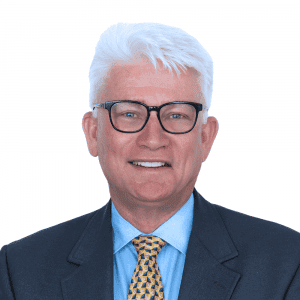
BioProcess Insider figuratively sat down with bioprocess veteran Roger Lias, as the new chief commercial officer of Vibalogics, to discuss his different experiences and predictions for the CDMO market.
Lias has served in senior roles at Diosynth, Lonza, KBI Biopharma, Cytovance Biologics and Eden Biologics. More recently Lias served as chief executive officer at Avid Bioservices before joining Indian drugmaker Stelis Biopharma, where he was responsible for transitioning its manufacturing models.

Roger Lias, chief commerical officer of Vibalogics. Image c/o Vibalogics
His latest career move takes him to US and German contract development and manufacturing organization (CDMO) Vibalogics, where he serves as chief commercial officer with responsibility for global oversight of the company’s business development, sales and program management divisions.
BioProcess Insider spoke with Lias to reflect upon his wealth of experience in the biologics CDMO space and to discuss the future of the sector.
Bioprocess Insider (BI): What changes have you witnessed since you started in the industry?
Roger Lias (RL): First and foremost, biologics CDMOs are now accepted as a critical component of the global biologics supply chain. Nowhere is this better illustrated than in the critical role played by drug substance and drug product providers in bringing critical COVID-19 vaccines to global populations in just a short amount of time. We have come a long way from the days when CDMOs had to persuade potential customers of the wisdom of buying access to capacity vs. investing capital in manufacturing infrastructure that could have been better deployed on core competencies.
Globalization and the attraction of multinational companies to the market has spurred investment in capacity that would have amazed me even 10 years ago. While the fundamental technologies that we employ to manufacture most biologics (growing modified cells and purifying the target molecule) are unchanged, we have seen enormous efficiency improvements in both process productivity and in the speed at which we run processes.
BI: How about from an operations and innovation standpoint?
RL: While there remain plenty of specialist providers delivering niche services, the market is now dominated by a number of recognized industry majors offering a diverse and comprehensive range of ’end-to-end’ services from numerous technology platforms, aiming to be a core partner to their customers. We are still operating within an essentially ’fee-for-service’ business model, but the relationship between CDMOs and customers has evolved considerably, leading to more strategic relationships, creative business relationships and closer cooperation.
It has also been interesting to watch single-use manufacturing technologies, and the flexibility the technology enables, take a dominant position driven heavily by CDMOs, even as are we again starting to see significant investment in stainless steel capacity at 10kL to 20kL scale to meet increasing global market demand.
CDMOs are also investing in new manufacturing technologies and approaches to spearhead efficiencies and drive down the cost of goods sold (COGS), such as continuous manufacturing. Financial imperatives at CDMOs simply did not allow for this until relatively recently. I am excited to see CDMOs truly at the forefront of the development of manufacturing techniques for the advanced class of modalities such as viral and gene therapy, cell therapy, and their application for immunotherapeutic, vaccination, and other purposes, to treat a wide range of disease states, which were previously hard to target. In short, the market has grown and matured dramatically, and most reliable sources predict no signs of a slow-down within the foreseeable future. CDMOs are no longer ’followers’ but rather leaders within the biomanufacturing space.
Q: How has your experience at other CDMOs, shaped how you work today?
RL: A major lesson I took away from these experiences was that operating as a CDMO is very different than running similar operations in support of captive inhouse programs. Being directly and more intimately beholden to both customers and investors as a CDMO demands additional scrutiny and accountability. It also requires a much higher level of responsiveness, which can be difficult for a previously in-house team to acclimate to.
While I have worked within start-up CDMOs before, the experiences gained while transitioning the business models of these organizations really brought home one key lesson. No matter how many bioreactors we run, or High-Performance Liquid Chromatography (HPLC) assays we execute, what we are really selling is people, their expertise and experience.
If we assume that appropriate compliance is non-negotiable, the job of our experienced people then becomes to deliver ‘speed’ to our customers. Whether it’s facilitating the evaluation of candidate cell lines, meeting an aggressive Investigational New Drug (IND) date, or releasing current Good Manufacturing Practice (cGMP) batches according to an agreed schedule, on-time delivery has become a mantra for me.
BI: What takeaways can you share from your two most recent roles, those at Avid Bioservices and Stelis Pharma?
RL: I am grateful for my experiences at both Avid and Stelis, which gave me the opportunity to experience the biologics CDMO market from two different and somewhat unusual vantage points. In the case of Avid, being publicly traded as a relatively small CDMO certainly brought many challenges which helped to shape creative approaches and to drive urgency.
At Stelis, the truly global nature of the marketplace and the magnitude of the opportunity to help bring life-changing and life-saving medications to needy patient populations also helped to renew my focus. I am looking forward to bringing all this experience to bear at Vibalogics, where I believe we have a unique combination of expertise, capability and capacity in the onvolytic virus, viral vector gene therapy and vaccine development and manufacturing space.
BI: Are there still issues in the CDMO space that need to be resolved?
RL: The biologics CDMO market (particularly for cell and gene therapy applications) is understandably attracting considerable investment and barriers to entry are shrinking all the time. While the current shortage of suitably experienced technical staff across the biomanufacturing industry is beginning to draw attention, I do harbor concerns that some current start-ups and new entrants to the space may not have sufficient management horsepower to execute efficiently or to fully understand the critical cadence of the business. Creating a team that has the prerequisite technical and business skill, and truly buys into the needs of customers and investors is a challenge, but is essential to success in this marketplace.
BI: Has the pandemic made any major changes to the CDMO space that will stick, or is it a ‘blip’ in the timeline?
RL: It’s too early for us to be able to robustly assess the impact of the pandemic on the biopharmaceutical CDMO market. Certainly, it has spurred significant investment in new capacity – particularly to support the high demand for vaccine development and manufacturing. Drug product providers are likely to experience continued strong demand alongside Drug Substance providers supporting Adeno-Associated Virus (AAV) and mRNA vaccine manufacture for the foreseeable future.
The near-term effect of the understandable need to focus capacity on pandemic related vaccines and therapeutics has, in my opinion, been under-reported. Lead times for access to manufacturing capacity may be considerable and it’s likely to remain necessary for CDMOs to demand reservation fees or other upfront commitments to secure capacity and to de-risk investments necessary to support demand. These developments may create further opportunity for new niche players to enter the market, even as the industry enters a period of consolidation with many existing small players being acquired by larger companies.
While not specific to CDMOs, the focus on and demand for COVID related products has created an exceptionally challenging supply chain environment. In particular, lead times for disposable single-use components, ranging from bioreactor bags, to tubing sets and connectors, have been frequently quoted at over 12 months by most major suppliers. This is now directly impacting operations and production schedule management at many manufacturers. Despite investment in additional capacity, I believe the situation will remain challenging for some time to come.
An interesting side effect of the current situation has been that otherwise competitive CDMOs and drug developers have found themselves collaborating to combat the pandemic. Notable examples include Amgen and Eli Lilly working in partnership on monoclonal antibody manufacture, and both Merck and Sanofi offering capacity to assist Johnson & Johnson with vaccine production. Competitive CDMOs equally now find themselves part of the same supply chain for some products. It will be interesting to see whether this is an enduring trend.
Despite the challenges caused by COVID for some manufacturers, overall, the pandemic has been beneficial to many within the CDMO industry and has cemented CDMOs as a critical component of global supply chains for the future.
Thank you for joining us for this week’s Ins & Outs. If you have a story you think would work for us, please contact [email protected].
About the Author
You May Also Like





